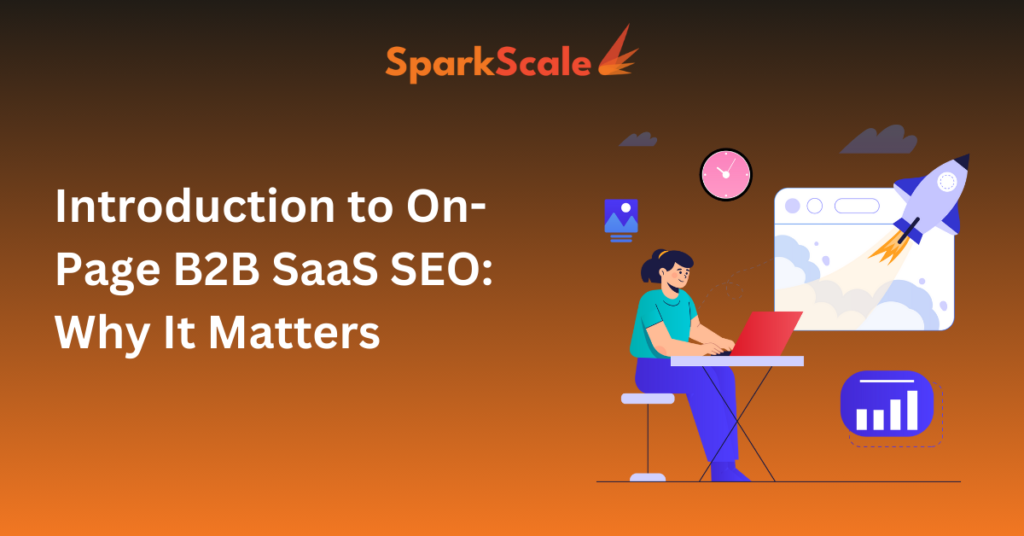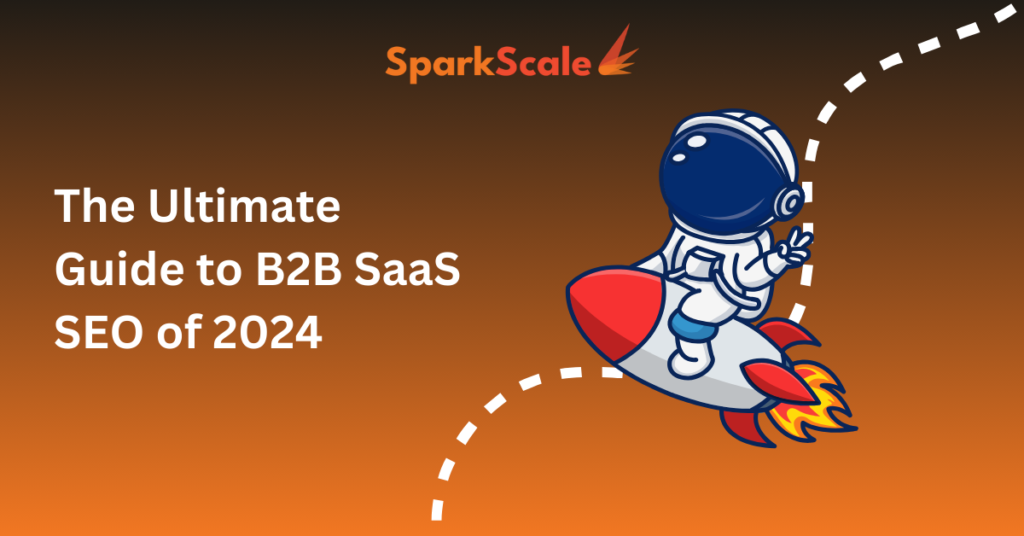Introduction to On-Page B2B SaaS SEO: Why It Matters
Hey there! If you’re wondering why everyone keeps buzzing about SEO for B2B SaaS, or if you’re simply looking to jazz up your digital strategy, you’ve landed in the right place. Let’s dive deep into Search Engine Optimization (SEO) and unpack why it’s crucial for businesses like yours.
First off, SEO for B2C (business-to-consumer) often steals the spotlight with its mass marketing tactics. However, B2B SaaS SEO is a different beast. It’s like the unsung hero working behind the scenes, ensuring your software solutions reach the right business professionals effectively and efficiently.
Why does it matter so much? Well, here are a few compelling reasons:
- Visibility in a Crowded Market: The tech space is overflowing with innovations and new SaaS products popping up every day. Good SEO strategies help your product stand out from the crowd and get noticed by the right decision-makers.
- Quality Leads Over Quantity: It’s not just about attracting traffic but attracting the right traffic. With B2B, you’re aiming for quality leads—professionals who are genuinely interested in your service and more likely to convert into long-term customers.
- Cost-Effective Marketing: Compared to traditional marketing methods, SEO can be a much more cost-effective strategy. It targets users who are already searching for your solution, reducing the need to spend heavily on broad-spectrum advertising.
Think of SEO as your 24/7 promotion team. It doesn’t clock out. While you’re sleeping, SEO is there, guiding potential leads through Google’s vast terrain right to your digital doorstep. It’s like having the best sales rep in the world who doesn’t take breaks!
On-Page SEO in the B2B SaaS Sector
Here’s the kicker—getting SEO right in the B2B SaaS sector isn’t just about throwing keywords onto a webpage or tweaking meta tags. It’s about crafting a strategy that resonates with your business goals and aligns with what your potential customers are searching for. It’s about creating content that speaks their language and answers their most pressing queries.
So, whether you’re a seasoned pro looking to tweak your existing SEO strategy or you’re just starting out, understanding the importance of SEO in the B2B SaaS landscape is your first step toward digital triumph. Keep it locked right here, and together, we’ll explore how to make SEO a powerhouse channel for your business.
Ready to transform your B2B SaaS business with top-notch SEO practices? Let’s make sure your incredible solutions get the spotlight they deserve in the digital world!

Understanding Your B2B SaaS Audience: Keywords and Intent for On-Page SEO
If you’re venturing into the vast world of B2B SaaS SEO, knowing your audience is not just beneficial; it’s essential. Forget about the generic approach – understanding the specific needs and behaviors of your prospects can make or break your SEO strategy. Let’s dive into it.
Keywords for a B2B SaaS SEO Strategy?
Imagine trying to find a needle in a haystack. Now, wouldn’t it be easier if you had a magnet? Think of keywords as your magnet in the digital universe. They are pivotal in guiding your ideal customers from a Google search right to your doorstep. Keywords are more than just SEO jargon; they’re the terms and phrases your potential clients use when searching for services you offer. But here’s the kicker – it’s not just about finding the most popular keywords, it’s about finding the right ones.
To begin, simply act as a user checking out for a solution like yours online. They do not know you or your company yet. They need to start somewhere right? Therefore, they’ll type a keyword that resonates with the product or solution they are looking for. It can be:
- Management software for [your profession]
- Accounting software for [your profession]
- Warehouse management software for [your industry]
- Etc.
However, they will still not see your website while scrolling on Google. That’s because you have not yet established an online presence. But now you have a list of keywords that you want to rank for on your website, the next step would be decoding the user intent.
Decoding User Intent in your On-Page B2B SaaS SEO Strategy
Understanding user intent is akin to mind-reading. Well, not literally, but it’s about getting into your audience’s head. When someone types a query into a search engine, they’re on a mission. They have a specific intent – be it to find information, make a decision, or purchase a service. Your job? To figure out what that intent is and how it aligns with your content. Here’s how you can do just that:
- Informational Queries: These are used when a user is looking for information. Think about terms like “how to improve X and Y in [your industry]”. Users aren’t likely looking to buy just yet.
- Navigational Queries: If someone types in “best online tools for small business,” they might be in the research phase but getting closer to a purchase.
- Transactional Queries: Any search query that includes terms like “quote”, “price,” or “estimate” indicates that the user is ready to book a demo with a sales rep.
By aligning your content with these intents, you ensure that the right eyes land on your site at the right stage in their journey. You wouldn’t want to mix up these queries as you’d risk bringing in a crowd that isn’t ready to engage the way you’d like them to.
Finding the Perfect Keywords for your B2B SaaS SEO Strategy
Ready to go keyword hunting? Here’s a pro tip: use tools like Google Keyword Planner, Ahrefs, or SEMrush. These tools aren’t just powerful; they’re treasure maps that reveal the terms your audience is searching for. But remember, it’s not just about volume – relevance and competition are equally important.
Start by making a list of basic keywords that describe your product or service. Next, expand this list by thinking about the problems your software solves or the specific outcomes it achieves. For each keyword, consider the intent behind it, and craft content that directly addresses this intent.
Remember, understanding your B2B SaaS audience through the lens of keywords and intent is not just about getting traffic. It’s about getting the right traffic. Traffic that converts, engages, and stays loyal. So, take these insights, apply them wisely, and watch as the right visitors come knocking on your digital door!
Technical On-Page SEO Essentials for B2B SaaS Websites
Let’s dive into Technical SEO for your B2B SaaS. Don’t worry, I promise to keep the tech talk friendly and totally approachable. After all, making your website shine in the eyes of search engines doesn’t require a degree in rocket science—just a bit of know-how and some diligent upkeep!
1. Speed is Key
First things first, page speed is a big deal. Imagine waiting forever for a page to load. Frustrating, right? Well, Google feels the same way. A slow website can hurt your rankings and annoy potential customers. You can start by checking your site’s speed with tools like Google’s PageSpeed Insights. It’s like a health check-up but for your website’s speed!

This is how our website performs based on PageSpeed.
Check your website’s speed here
2. Mobile-Friendliness
Next up, ensure your site is mobile-friendly. With more and more people browsing on their phones, your website needs to look good and function well on any device. A responsive design that adjusts to different screen sizes is crucial. Test this by viewing your site on various devices or using tools like Google’s Mobile-Friendly Test.
3. Secure Your Site with HTTPS
Security isn’t just for keeping your data safe—it also affects your SEO. Switching from HTTP to HTTPS keeps your site secure and builds trust with visitors. Plus, Google gives a small ranking boost to secure sites. Consider it a win-win for both security and SEO!
4. Clean and Structured URLs
Have you ever seen those super long URLs with weird characters? They’re not just ugly; they’re also not SEO-friendly. A clean and structured URL should be easy to read and include your target keywords. For instance, use www.yoursaassite.com/features instead of www.yoursaassite.com/index.php?id=123.
5. Eliminate Duplicate Content
Duplicate content can really confuse search engines. They might struggle to decide which version of a page to show in search results, which can dilute your ranking power. Make sure each page on your site is unique and use canonical tags when necessary to point search engines to the original content.
6. Improve Site Structure with XML Sitemaps and Robots.txt
Help search engines understand your site better by using an XML sitemap – a map for search engines outlining all the important pages on your site-. Also, use robots.txt to guide search engines on what parts of your site they should and shouldn’t index. Think of these tools as giving Google a GPS and a list of ‘no-go’ zones on your website.
7. Utilize Schema Markup
Last but definitely not least, implement schema markup. This is a type of code that helps search engines return more informative results for users. For instance, if you have reviews for your SaaS product, schema markup can help display these as star ratings in search results—super eye-catching and useful for potential users!
Conclusion
Great, now you’ve got the base to rank your B2B SaaS Website online. Wrapping up, tackling these technical SEO basics can significantly help your B2B SaaS site climb up the search engine rankings. Remember, like any good machine, regular maintenance and updates are key to performance. Now, go give your website the technical TLC it deserves!
Your next step would be planning a Content Strategy for B2B SaaS that Aligns with the Sales Funnel. Crafting content that not only attracts attention but also nudges potential customers along the buying journey.


